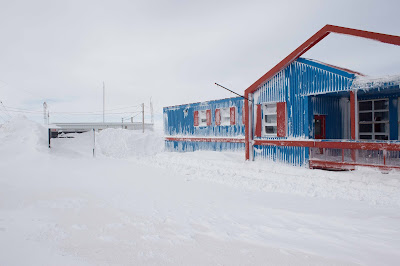Guest post by Jackie Hung:
Going to Cape Bounty for a second field season, the novelty of
High Arctic field work has still not worn off. Seeing the Weatherhaven tents
through the window of the Twin Otters as we circled the cape brought back all the
memories of the previous season. That is, until we had to dig out the tents
from over 2 metres of snow.
Opening camp was a completely new, rewarding, and humbling experience.
Seeing the landscape transform from late-winter conditions to spring and summer
growth gave me a new perspective on the amount of change that the land
undergoes and the harsh environment that the flora and fauna endure here. I was
able to finally see and take part in some of the research and data collection
that is undertaken in the early season, including lake sampling and river
channelizing. Coming to the field before the growing season has also given us
the chance to see the birds in their nesting season. Camp has been frequented
by several visitors so far, including large muskox herds, curious caribou, and
large Arctic hares.
In 2017, my day-to-day activities included taking static CO2
measurements, trace gas sampling, spectroradiometer work, and soil sampling.
Carbon exchange autochambers and buried soil moisture and temperature loggers
are allowing me to take continuous measurements in various locations to
complement my seasonal data set. Soil samples taken from the field will be used
towards laboratory experiments that will allow me to manipulate different
biophysical features to see the microbial response the soils to elevated
temperature and fertilization. This field season has given me a head start to
the sampling for my new role as a Queen’s student and will help in formulating
the questions that will form the basis of my Ph.D.



























